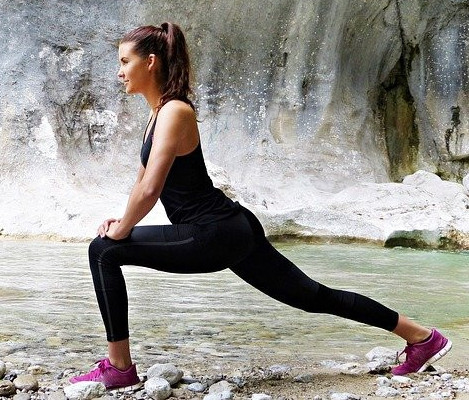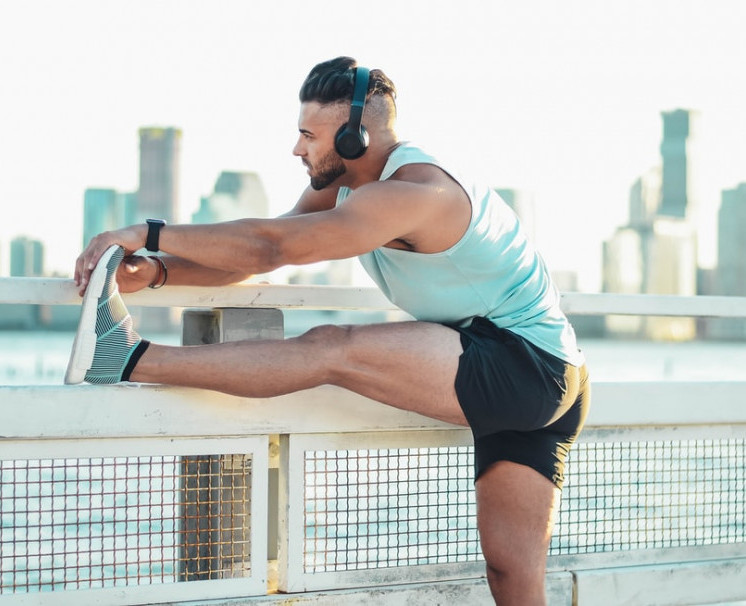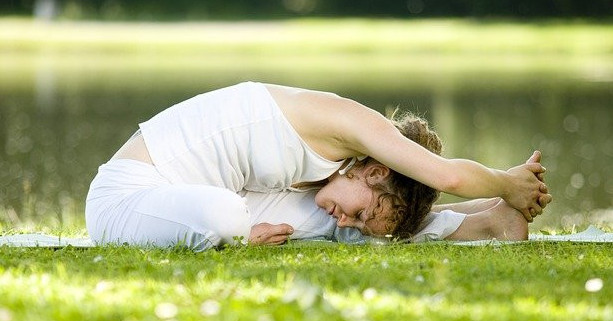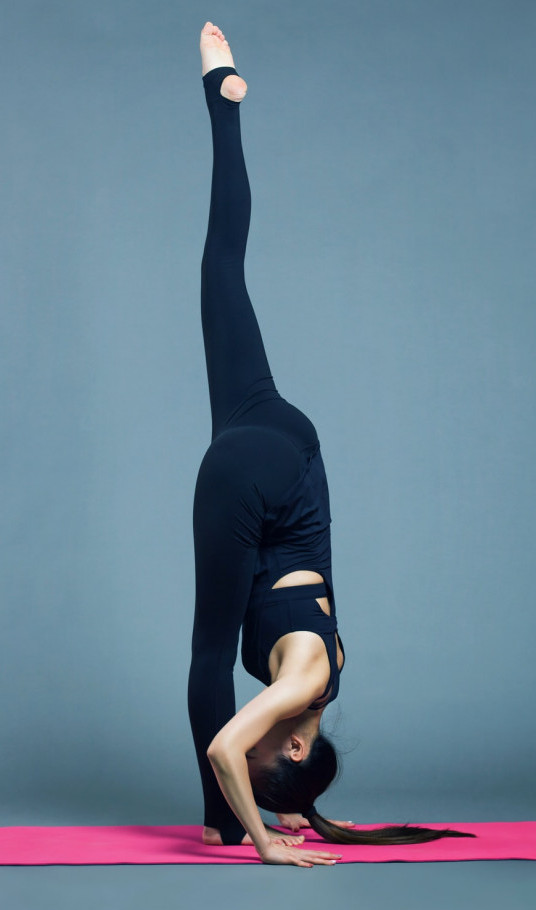What is the importance of flexibility? How important is flexibility as you get older? Let’s look at why flexibility is important for everyone no matter what your age and whether you are a dancer or not!
It is important to keep in mind that strength and flexibility should come together, as it is not healthy to have one of those elements without the other.

What Is The Importance Of Flexibility?
As we age, we become less active. If you look at a young child, for example, they are not scared to try anything, simply because they are flexible and thus bounce back from injuries and falls a lot faster than an older person would.
So as you get older, it is very important to keep your strength and flexibility by working on it a few times a week. This will go a long way to aging slower and having a body that will work for you well into your old age.
The trick is to use strength to access your flexibility, as it doesn’t help to be flexible if you don’t have the strength to back it up. So build your flexibility on a foundation of strength.
If you don’t maintain your flexibility as you get older, your range of motion will get smaller and smaller and you will become less and less mobile. So if you are wondering what is the importance of flexibility, that is the main reason to keep yourself flexible and strong.
What Is The Definition Of Stretching?
Stretching means being made longer without tearing or breaking. Stretching moves the ends of the muscles apart as well as pull the muscle fibers to maximum length. The connective tissue then picks up the slack. Stretching is one of the methods used to improve flexibility.
What Is The Definition Of Flexibility?
Flexibility is the range of motion around a joint. If you are flexible, you should also be able to move without discomfort and pain.
How To Think About Stretching
Stretch Reflex
If you walk on a wet floor and you slip why don’t you land in a split. The stretch reflex is a response to your body going out of its comfortable range of motion. Everything contracts and this prevents you from tearing your muscles.
Although good for you, it is quite irritating when trying to stretch. If not in a comfortable range of motion your body’s stretch reflex comes into play and it contracts. If you hold the stretch, then the stretch reflex muscles relax eventually.
 Aim to stretch your muscles first then your connective tissue (Fascia). Fascia is an inner skin-like web that connects everything in your body.
Aim to stretch your muscles first then your connective tissue (Fascia). Fascia is an inner skin-like web that connects everything in your body.
Stretching rehabilitates scar tissue as it pulls out all those nodules.
Because muscles work in opposition all over your body, you should be doing movements in a way that balances each other out.
If you overwork a muscle, or you work with misalignment, that muscle becomes tired and the opposite muscle becomes weak, and that is when injuries happen.
Tight muscles should be stretched and weaker muscles strengthened in an ideal stretching routine.
When you overcompensate and move incorrectly, your body decreases its range of motion to protect your sore muscles and as a result, you get tighter. You need to keep the flexibility to make sure your natural range of motion comes into play and you can maintain your movements.
The Advantages Of Stretching
If you are still wondering what is the importance of flexibility, here are some great reasons to add stretching and flexibility into your fitness program.
- stretching improves your posture, thus all your internal organs will be better aligned to work properly for all-over vitality.
- stretching enhances your blood flow.
- stretching out your muscles reduces and prevents injury, pain, and stiffness.
- being flexible enhances athletic performance.
- having a flexible body improves your quality of life.
- stretching is psychologically calming, relieves stress, and brings calmness to our busy lives.
- decreases depression and anxiety.
- enhances your body image.
- give you the confidence to try and do more active and exciting things.
Building Up Your Flexibility
Flexibility needs to be built on a platform or patience. Some teachers make their pupils hold a stretch. This works because the muscles relax into the stretch the longer the stretch is held, but unfortunately the next day you are back to square one again.
The better way to build your flexibility is to build your strength at the same time. The idea is to be flexible but also be strong enough to hold the stretch. For example, many dancers can shoulder their legs but are their muscles strong enough to hold the leg up without using the arm. The height at which they can hold their leg is called the end range strength, and working these muscles is a great long-term way to improve both strength and flexibility.
When your body feels strong enough, it will let you go further than you could have ever imagined.
Next time you stretch, think to yourself am I stretching the muscle and at the same time working the opposite muscle to build strength?
The trick is to exercise so that you are strengthening the muscles as well as building flexibility at the same time.
When Should You Stretch?

You should try and stretch every day for better results, especially if you are a dancer or a gymnast. For people who are not in a profession that needs a lot of flexibility two to three times a week will suffice.
A great time to add stretching to your routine is just before and after intense physical exercise. Just keep in mind that the types of stretches you do before a workout are very different from the types you do afterward when you are a lot warmer.
If you look at the runner above, this type of stretch should rather be done at the end of the run to stretch out the muscles rather than at the beginning.
To enhance this stretch he could be pushing down with his top leg and strengthening his quads while at the same time stretching out his hamstrings.
Stretching Myths
Stretching Should Hurt
Stretching must be taken to a point of mild discomfort. Never to a point of extreme pain. Exercise and stretching will create micro-tears in the muscles, so it is normal to feel sore or uncomfortable the next day.
You Already Have To Be Flexible
Our lifestyles make us more flexible. Even if our bodies are not as strong and mobile as we used to be. Everyone can become more flexible.
Some are obviously born more flexible, but everyone can become more flexible.
The Best Stretching Exercises Focus On One Muscle At A Time
Not true, as you don’t move like this naturally. Train like you would move. You also need to target surrounding muscles.
Effective Routines Use The Same Stretches Over And Over
If you keep doing the same things over and over, you will eventually plateau, so work on changing it up every now and then.
I’m Too Old To Stretch
A lifestyle of bad habits make it more difficult to stretch, but anyone no matter what the age can improve on what they have. You are never to old to improve the state of your physical body.
Stretching Mistakes
Not Warming Up And Cooling Down
It is essential to warm-up well before you do any intense stretches. A good mobility routine that warms up all the joints is best.
Warming up will prepare the muscles and increase the blood flow as well as warm up your core temperature. Passive stretching at the end of a workout cools the core temperature down and is a great way to end a workout.
Using Fast Jerky Bounce Like Movements
This is called balistic stretching. If you know your body and you are flexible it shouldn’t be a problem, but you can injure yourself unless you are at a certain level. You could end up using too much force.
Not Holding Your Stretches For Long Enough
If you are doing passive stretching, you do need to allow your body to relax into the stretch (at least 60 to 90 seconds) for any benefits to be maintained.
Holding Your Breath

This makes your body tense and your muscles contract, which is the opposite effect that you want for your muscles to stretch.
Sometimes you hold your breath if you have gone too far in your stretch. It’s best to breathe deeply and relax into your stretches, especially on the exhales.
Sacrificing Form For Depth
Good form is important to avoid injury. Keep your body aligned when you stretch. For instance, it is a good idea to keep your back as flat as you can when stretching over your leg, rather than rounding down and trying to get your head on your knee.
Types Of Flexibility
Did you know that there are different types of flexibility? Here are a few of them.
Dynamic Flexibility
The flexibility you have during movement, like a dancer that kicks her leg up high.
Static Flexibility
Holding a movement using your own muscles. This is more difficult but is something we should all work on.
Static Passive
Using a partner to get you into position.
Passive
One example of a passive stretch is lying in a split. Passive stretching is not the most functional type of flexibility. Active and dynamic flexibility are more beneficial.
Types Of Stretches
There are different types of stretches that people use.
- Ballistic – bouncing – not always ideal.
- Dynamic – this type of stretching is great for warmups as it takes the joints through a range of motion. A good example of this is doing a ballet barre.
- Active – an example would be lifting your leg and holding it there.
- Isometric – this type of stretching is used to rehabilitate injuries. It is resisting against a force, whether it be a partner, the barre, or even your own body weight. You contract either the agonist muscle or the antagonist muscle. Agonist works when the muscles relax and antagonist works when muscles contract. They usually work in opposition. When doing any resistance stretch, you only need to use twenty percent effort.
- Contract Relax Contract Method – this is a safe method of stretching as you contract the opposite muscle to the one you are stretching, thus building strength. This is also a great way to get past the stretch reflex.
- Dynamic Oscillatory Stretching – This type of stretching is done with small pulses and body control and breathing. Much safer than the ballistic method as you use your body to move you there and not momentum.
- Movement Stretching – This is like dancing, as you are moving and stretching at the same time. This takes the load off of the muscles being stretched and gets the body to stretch in multiple different angles.
So as you can see the importance of flexibility is not only for dancers but for everyone. Increasing functional flexibility is great for everyone throughout all walks of their lives.


Hello, flexibility is very important to counteract our body aging. So I know that you must work on it. I used to be flexible as a child but I lost it when I became an adult. When I started my exercise routine, I integrated stretching in it and I really feel the positive effects and benefits. I am also thinking about including yoga in my morning routine.
Yoga is a great way to get flexible and strong, but it is quite difficult to get started when you are not flexible.
Hearing about this topic I remembered how much more active I had been on the subject before. I went to aerobics, I trained volleyball, I could do a rope without any problems. But I was fit and weighed less. Today it is a bit of a thesis but certainly thanks for the advice.
I am looking to improve my flexibility after driving a truck for six years and plus getting older. That is how I found your blog post, am not a dancer but willing to try anything. Will be using your stretching ideas to help me improve. Have booked marked your website and even shared on social media!
Thank you Jannette and glad you found these stretching ideas useful.
Hi. While I am not dancer I am very interested in improving my flexibility. Any suggestions for loosening my hips? This has always been a challenge for me. I do some yoga during the week but need to up my regularity. Would pigeon pose be a good one for this? Thanks for the help.
Hi Dave,
The pigeon pose is a great one for loosening the hips and the lower spine, as well as the buttocks. Another good one is to sit with the soles of your feet together and knees outward. Now try to get your belly as close to the floor as you can. Once you feel the stretch in your hips, hold the pose.
I found out the hard way about flexibility. I had Guillain-Barre Syndrome several years ago and had to learn to walk again. I had been bed-ridden for several weeks and lost my muscle tone. I had to rebuild and gain strength in my muscles. Part of this was done with a physical therapist. I attempted to go too fast to reach my goals. She told me that going fast was not the right way to go for the results that I wanted. She told me to slow down and let my muscles extend so I could rebuild my strength. This also helped me develop a habit of stretching before any exercises I did. I still do that to this day.
Jerry
So sorry to hear you had to go through all that, but on the bright side, at least some long lasting good habits were built from your experience.